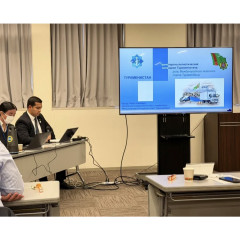


Turkmenistan, Uzbekistan, and Kazakhstan have agreed to jointly protect the natural system of the Ustyurt Plateau, a unique ecosystem in Central Asia.
In this regard, a Roadmap was signed for the period up to 2030, which includes measures such as protecting migration routes, improving the monitoring system, and strengthening the fight against illegal hunting. The preparation of this document was supported by the Michael Succow Foundation (a charitable nature conservation foundation) and the Secretariat of the UN Bonn Convention on the Conservation of Migratory Species of Wild Animals, as reported by centralasiaclimateportal.org.
The Roadmap was prepared with the aim of uniting the efforts of the region's countries and international partners to protect biodiversity.
The Roadmap covers the period 2025–2030 and focuses on the following seven key areas:
1. Transboundary conservation of wildlife and their habitats.
2. Improving the monitoring of transboundary populations of rare species.
3. Raising awareness about the importance of the Ustyurt Plateau for biodiversity conservation.
4. Combating illegal hunting.
5. Developing eco-tourism and reducing the impact of economic growth on biodiversity.
6. Cooperation in restoring the cheetah population.
7. Strengthening international cooperation in nature conservation.
Representatives from relevant environmental agencies of Uzbekistan, Kazakhstan, and Turkmenistan are involved in the implementation of the roadmap.
It should be noted that the Ustyurt Plateau is located in the western part of Central Asia, across the territories of Uzbekistan, Kazakhstan, and Turkmenistan. The region has extremely harsh climatic conditions: summers are hot and dry, while winters are very cold and windy. Despite the severe climate, over 700 plant species, around 230 bird species, and approximately 60 mammal species inhabit this area.









